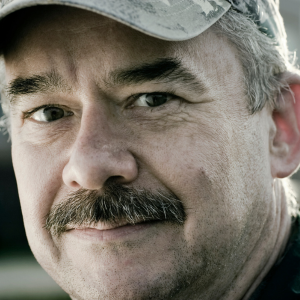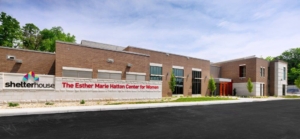
Strategies to End Homelessness leads the Homeless to Homes Plan which is the community’s coordinated response to homelessness among single adults. Funding for the plan is provided by the Hamilton County Indigent Care Levy.
In 2008, more than 90 key stakeholders representing the top leadership of City and County government, service providers, funders, the faith community, and the business community convened. Their goal was to collaborate on designing an improved system of care for single people experiencing homelessness. The result was the Homeless to Homes plan, adopted by the Hamilton County Board of County Commissioners and Cincinnati City Council in 2009.
The plan provides a comprehensive framework focusing on: client’s dignity and quality of life; providing a high level of service; achieving better outcomes for each individual; services that meet the unique needs of individuals; and a higher level of systemic coordination.
The Homeless to Homes Plan Shelter Collaborative
The Homeless to Homes Shelter Collaborative includes City Gospel Mission, Lighthouse Youth & Family Services, Shelterhouse, and Talbert House, and led by Strategies to End Homelessness. As the first phase of the plan built five new shelter facilities 2015. Ongoing each of the five new facilities provide day-time services and healthcare for individuals staying in shelter.
Shelter Facilities
City Gospel Mission Shelter: this 74-bed faith-based emergency shelter is for men. Additionally it includes an onsite agency partner, Modern Psychiatry and Wellness providing services for men struggling with addiction and mental health issues. Services include detox, IOP, individual and group counseling, access to a nurse and a nurse practitioner.
Sheakley Center for Youth: operated by Lighthouse, this 36-bed shelter is for young men and women aged 18-24. The Center has health care professionals on site to help residents with medication management, health education, first aid, connection to resources, and therapeutic one-on-one support during times of stress.
David and Rebecca Barron Center for Men: operated by Shelterhouse, this 150-bed facility for men (which also offers expanded winter capacity for both men and women) includes a state-of-the-art medical facility within the shelter. A nurse practitioner and a doctor are at the clinic five days a week. Also, Shelterhouse also offers recovery services and mental health services.

Hatton Center for Women
Esther Marie Hatton Center for Women: operated by Shelterhouse, this 60-bed facility for women offers a fully functioning medical clinic, meeting the specific needs of women. Pregnant women receive special attention. In addition, Shelterhouse also offers recovery services and mental health services.
Parkway Center: operated by Talbert House, this 51-bed facility provides transitional housing for homeless men and women. And it offers substance use treatment and case management. Also mental health and substance use disorder treatment providers and a nurse practitioner are on site regularly.
Integral Community Partners
NeighborHub Health (formerly Cincinnati Health Network): a community-based partnership providing services to homeless individuals from a single building located at in Over-the-Rhine. Services available at this site include primary medical, dental, and behavioral health. Additionally, mobile medical and dental vans travel to places where people congregate.
Cincy Smiles, Inc.: operates a Dental Portable Team to provide comprehensive dental treatment as well as a freestanding and fully operational state-of-the-art dental clinic for affordable dental care. At the clinic the patients have all their dental needs met, leading to better overall health.
Greater Cincinnati Behavioral Health Services: on-site in shelters as well as stand-alone service sites, provides diagnostic assessments and on-going counseling and mental health care.
2024 Data
In 2024, the Homeless to Homes Shelters served 3,562 people, a marginal increase from the prior year. Of those people, 72% identify as male, 26% identify as female, 0.25% as non-binary, and 0.59% identify as transgender. As far as race and ethnicity, 56.4% identified as African American/Black, 36.1% identified as white, 1.97% identified as Hispanic/Latina/e/o, 0.25% identified as Asian or Asian American, 0.31% identified as American Indian, Alaska Native, Indigenous, Native Hawaiian, or Pacific Islander, 0.20% identified as Middle Easter or North African, and the remaining 4.58% identified as multi-racial (a small number of people’s race/ethnicity was not collected).
The Homeless to Homes Plan Tracks Three Key Outcomes
- In 2024, 53% of shelter residents increased their household income. This increased significantly from 2022’s 21%. This is due to the shelters implementing a new program. SOAR Workers were placed directly in the shelters in order to assist with applying for benefits. SSI/SSDI Outreach, Access, and Recovery (SOAR) Workers were placed directly in the shelters to assist with applying for benefits. In 2024, having SOAR Works in the shelters continued to work positively for shelter residents, cutting the amount of time to apply for benefits in half.
- 75.58% of shelter residents exited to positive housing outcomes. In 2023, this outcome was 67%. It increased 8 percentage points in 2024. In 2019, this outcome was 48.8%. This represents a more than 26 percentage point increase in five years. Locally, the Hamilton County/Cincinnati Continuum of Care (CoC) is intentionally working to end chronic homelessness. The CoC, under Strategies to End Homelessness’ leadership, is working with Community Solutions and their Built for Zero Large City Last Mile initiative. This CoC group changed policies to more effectively coordinate and collaborate amongst stakeholders. And they developed a “by name” list that is reviewed in case conferencing as a community to strategically and intentionally address individual barriers to housing. This work is highly effective as demonstrated by the increase in households exiting to positive housing outcomes from shelter.
- And in 2024, 78.64% of people maintained housing stability for at least 24 months. Meaning that they did not return to homelessness two years after exiting.
Thank you
Finally, thank you to the Commissioners and residents of Hamilton County for renewing the Indigent Care Levy in November 2022. Thereby sustaining the Homeless to Homes Plan for another five years. And giving housing stability to thousands of Hamilton County residents.